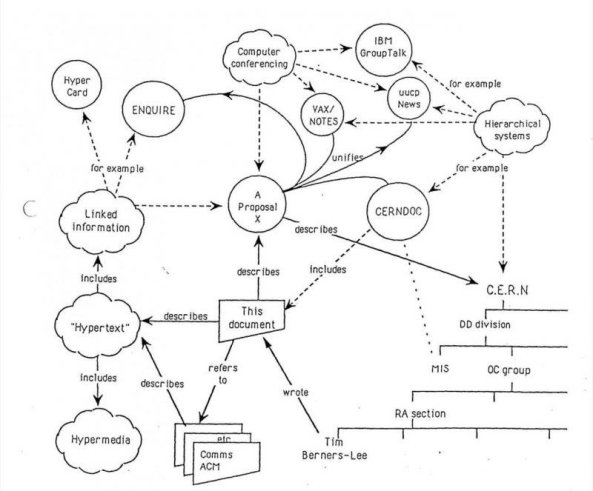The image on the cover page of Tim
Berners-Lee’s proposal for the World Wide
Web in March 1989 (Image: CERN)
In March 1989 Tim Berners-Lee, a scientist
working at CERN, submitted a proposal to
develop a radical new way of linking and
sharing information over the internet. The
document was entitled Information
Management: A Proposal . And so the web
was born.
The first website at CERN – and in the world –
was dedicated to the World Wide Web
project itself. Last April CERN initiated a
project to restore the first website, and to
bring back the spirit of that time through its
technical innovation and the founding
principles of openness and freedom.
In 1993 CERN put the World Wide Web
software in the public domain. CERN made
the next release available with an open
licence, as a more sure way to maximise its
dissemination. Through these actions, making
the software required to run a web server
freely available, along with a basic browser
and a library of code, the web was allowed to
flourish.
“Beyond CERN’s role in helping us understand
the universe, it was a great place to work in
1989,” said Tim Berners-Lee. “CERN was an
early adopter of Internet protocols, and their
support for a Royalty-Free Web has been a
key to its widespread adoption today.”
Now Tim Berners-Lee, the World Wide Web
Consortium (W3C) and the World Wide
Web Foundation are launching a series of
initiatives to mark the 25th anniversary of
the original proposal.
In addition, Berners-Lee and the Web
Foundation are launching “The web we
want ” campaign to promote a global
dialogue and change in public policy to ensure
that the web remains an open, free, accessible
medium – so that everyone on the planet can
participate in the free flow of knowledge,
ideas and creativity online.
SOURCE: CERN
